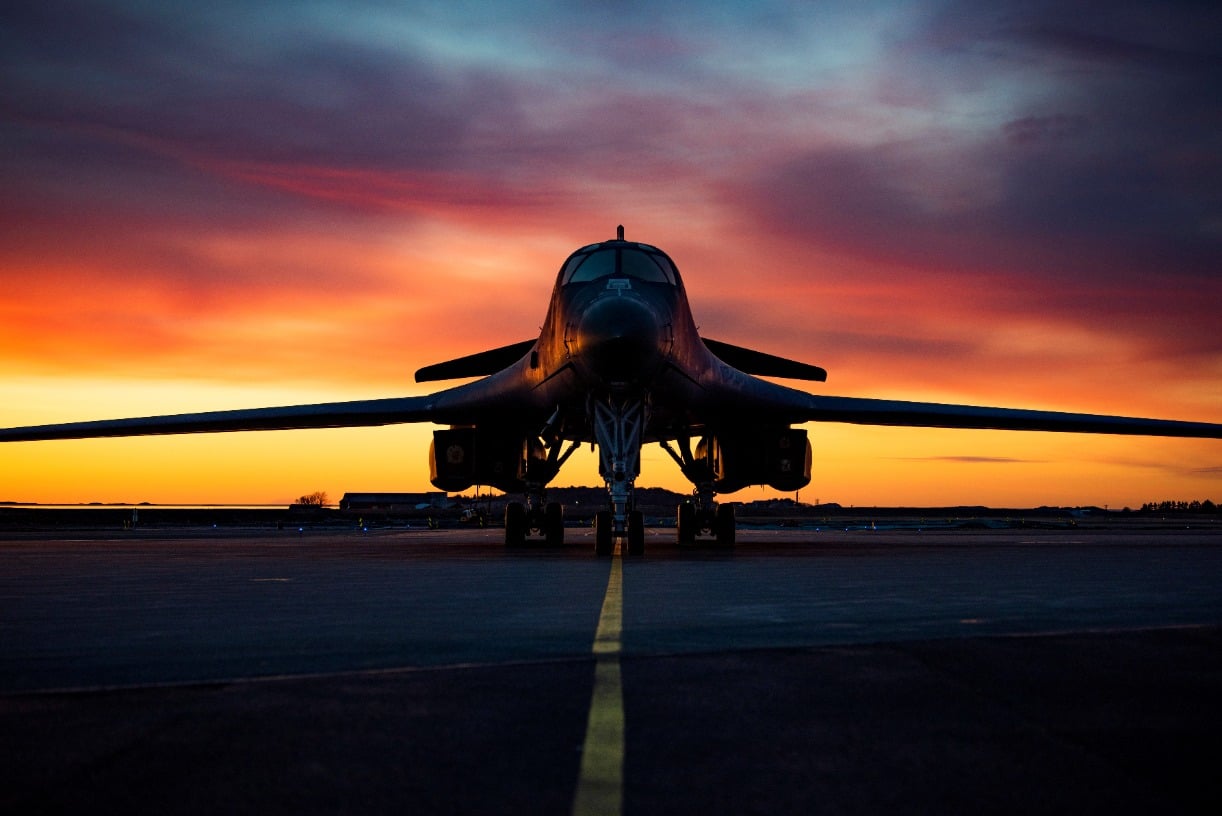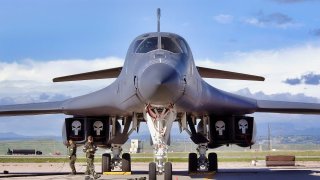The B-1B Lancer Doesn't Look Like a Bomber Headed for Retirement
The U.S. Air Force is reactivating and modernizing B-1B Lancer bombers from the boneyard to address delays in the B-21 Raider program and bridge the gap in its bomber fleet.
This is Strange: The U.S. Air Force is reactivating and modernizing B-1B Lancer bombers from the boneyard to address delays in the B-21 Raider program and bridge the gap in its bomber fleet.
The Lancer Keeps Getting Better: Despite its age, the B-1B continues to receive upgrades, such as the ability to carry new bunker-buster bombs, making it a formidable platform.
B-1B to B-21 Raider: With the bomber fleet numbers low and the B-21's arrival delayed, bringing B-1Bs like "Lancelot" back into service is a strategic move to maintain air combat capabilities.
As the Air Force faces delays in the B-21 Raider program, reactivating and modernizing B-1Bs helps bridge the gap in the service’s bomber fleet.
The U.S. Air Force’s B-1B bomber first flew several decades ago. Considering its age, it seems strange that the service continues to pull some of these airframes from the boneyard for operation.
This spring, the service revealed that one of these Lancer bombers, nicknamed Lancelot, would replace another B-1 whose engine exploded during routine maintenance in 2022. Instead of spending to refurbish the wrecked bomber, the Air Force decided it would make more sense to activate one of its retired counterparts from the 309th Aircraft Maintenance and Regeneration Group at Davis-Monthan Air Force Base in Arizona.
The B-1B may be an aging platform, but the service continues to upgrade it. Lancelot will probably be modernized soon.
Just last month, images of a B-1B bomber carrying a new bunker-buster bomb circulated on social media. According to The Aviationist, the bomber was spotted flying over the Mojave desert with a 5,000-pound GBU-72/B. Photographer Ian Recchio was photographing aircraft and reptiles in the area when he was made aware of a B-1 approaching the area.
“On this day, although I could not confirm definitively it was the Edwards B-1, it appeared while refueling on a KC-135 which is not so common to see, so of course I fired off a few frames,” Recchio said. “Both aircraft continued to circle the area for about 2 hours, and I took a few more opportunities to capture images.”
The GBU-72 will certainly elevate the B-1 bomber’s lethality if made operational. This modification, along with several others that have been introduced to the platform over the years, helps the aircraft keep pace with emerging threats.

Considering the Air Force’s dwindling bomber fleet, the more B-1s snatched up from the boneyard and put back in the air, the better.
An Overview of the B-1B Lancer
In the years immediately after the Second World War, U.S. officials recognized the need for a new, modern bomber able to match the payload of the Air Force’s B-52 Stratofortress and the top speed of the B-58 Hustler.
The resulting Advanced Manned Strategic Aircraft program, later renamed the B-1A, would blossom into the legendary aircraft still revered today. North American Rockwell’s bomber prototype was selected as the new B-1A. The model featured large variable sweep-wings to increase lift during takeoff and landing – similar to the North American XB-70 and General Dynamics F-111 Aardvark.
The B-1B bomber variant was approved by the Reagan administration in the early 1980s to counter the Soviet Union’s advancing aerial fleet. The upgraded bomber was equipped with an increased payload, as well as advanced sensors and radars. Over the years, the Lancer underwent several more upgrades. Last year, the B-1B received a modernized Identification Friend or Foe system, updated mass data storage, a new defensive avionics system, and Link 16 tactical data communications capability.
Pulling Lancers From the Boneyard
While the Air Force does field newer bombers, the service’s total fleet numbers are dangerously low. Even the upcoming B-21 stealth bomber program is expected to face some delays, a concerning prospect considering the uptick in geopolitical instability around the globe. For now, resurrecting B-1 bombers from the boneyard could help alleviate the service’s bomber gap until the Raider is ready.
About the Author: Maya Carlin, Defense Expert
Maya Carlin, National Security Writer with The National Interest, is an analyst with the Center for Security Policy and a former Anna Sobol Levy Fellow at IDC Herzliya in Israel. She has by-lines in many publications, including The National Interest, Jerusalem Post, and Times of Israel. You can follow her on Twitter: @MayaCarlin.
All images are Creative Commons and/or Shutterstock.


